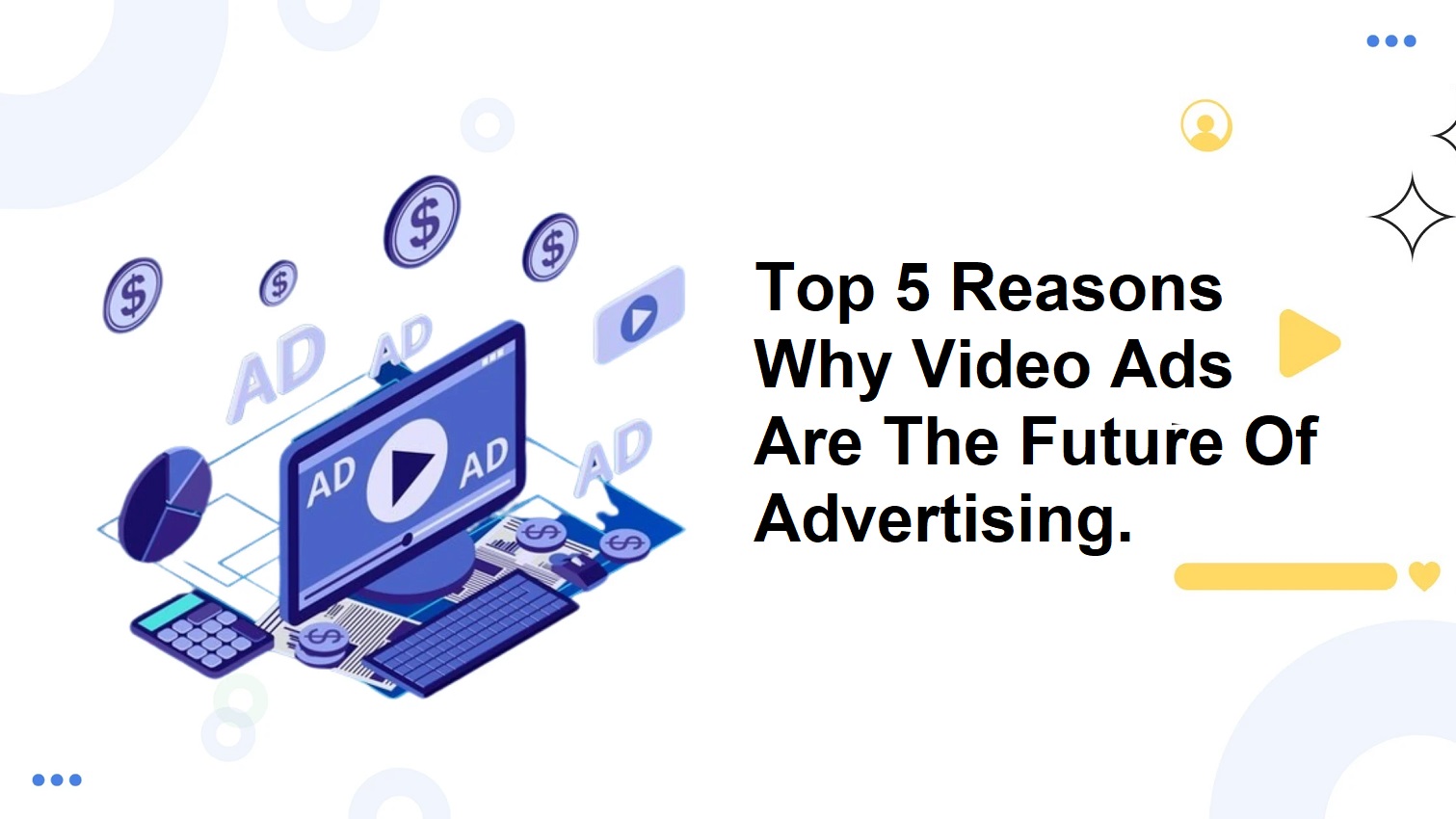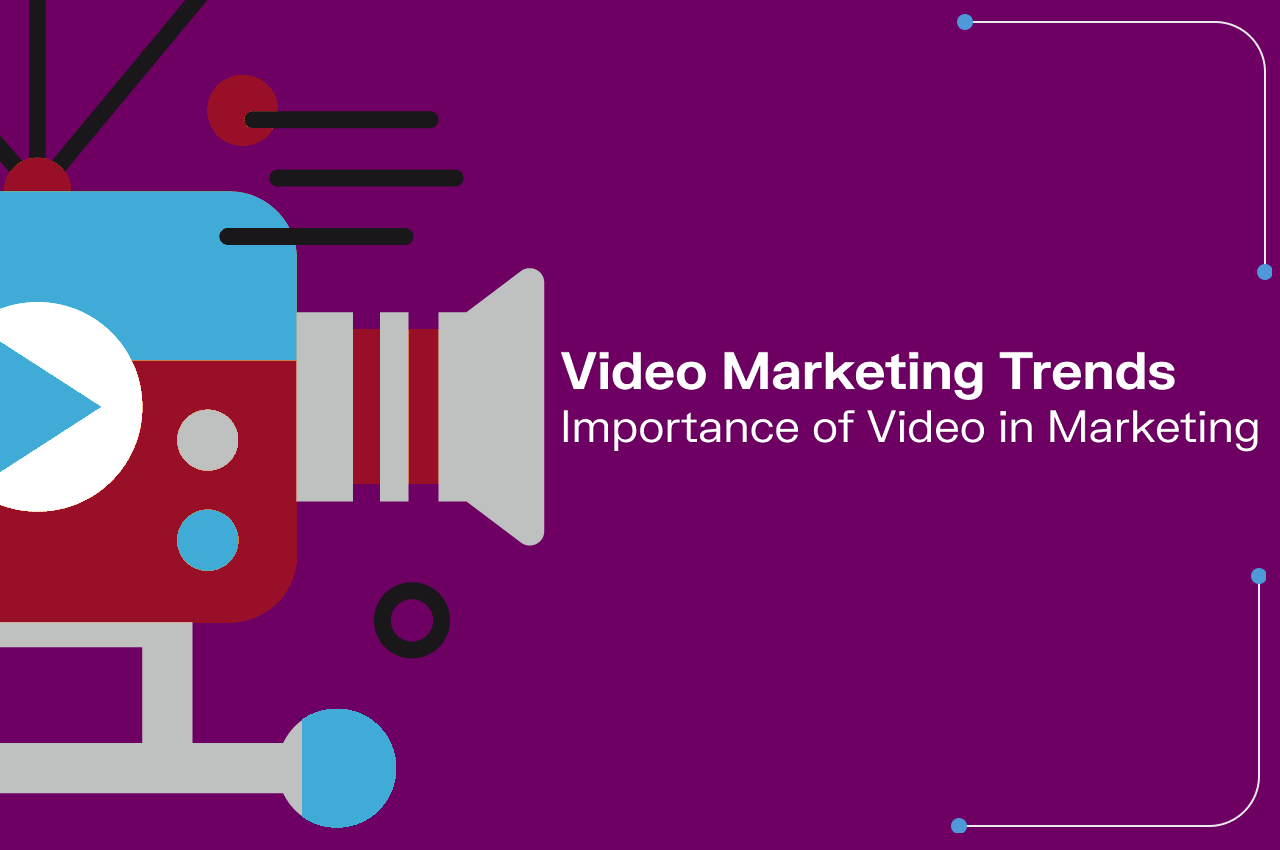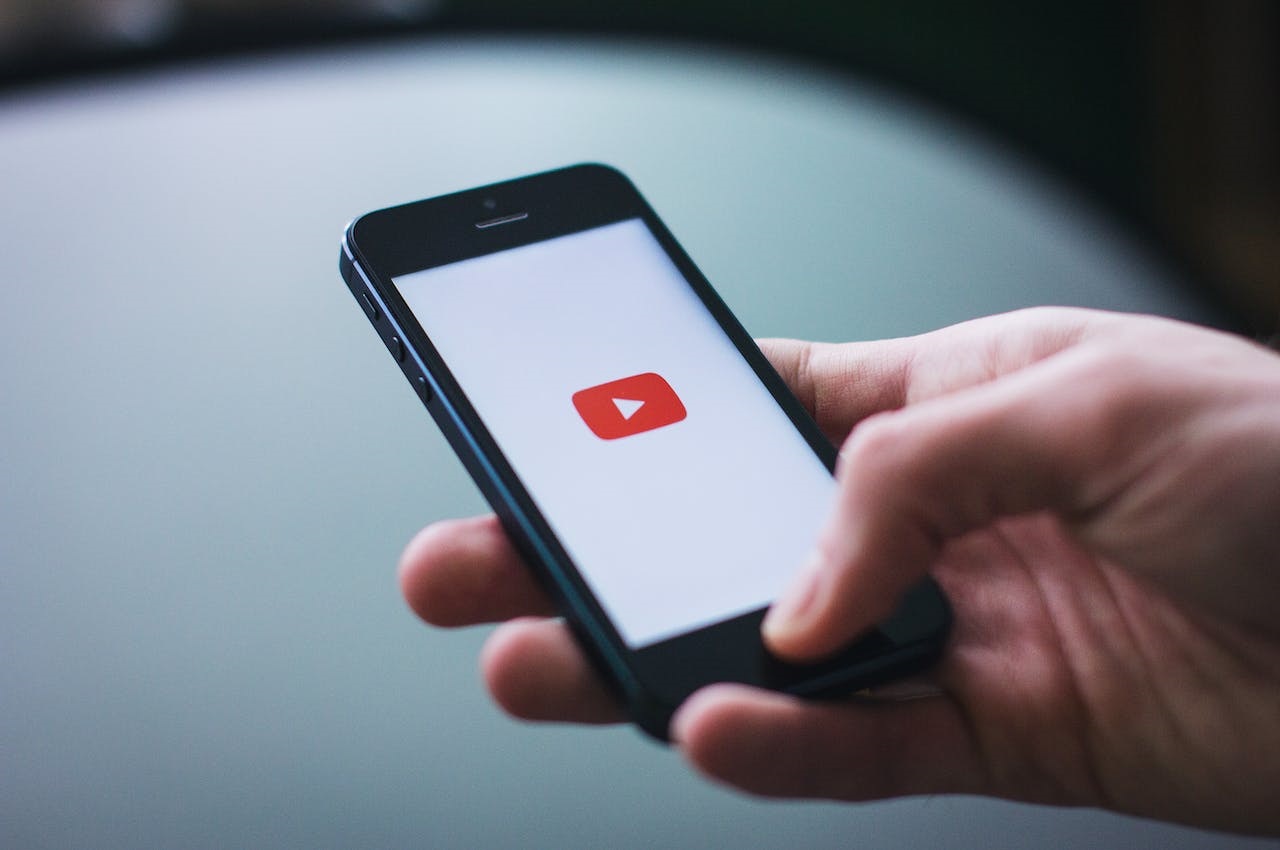The Powerful YouTube Marketing Strategy
A potent YouTube marketing strategy blends creativity, consistency, and audience understanding. Thorough audience research informs content creation, ensuring videos resonate with viewers. Optimized titles, descriptions, and eye-catching thumbnails enhance search visibility and click-through rates. A consistent posting schedule builds audience anticipation and engagement. Collaborations and cross-promotions expand reach, while engaging with comments fosters a sense of community. Playlists, series, and interactive content contribute to viewer retention. Utilizing YouTube analytics provides insights for strategic refinement. Promotion on other platforms increases visibility, and judicious use of YouTube ads targets specific demographics. This holistic approach optimizes YouTube’s vast potential, fostering brand growth and audience connection.
YouTube has evolved into a powerhouse for content consumption, making it a pivotal platform for marketers to connect with their target audience. Crafting a robust YouTube marketing strategy is essential for brands looking to leverage the platform’s vast reach and engagement potential. This guide delves into the key elements of a powerful YouTube marketing strategy, offering insights and actionable steps for success.
I. Introduction To YouTube Marketing
A. Definition and Overview
YouTube Marketing involves the use of the YouTube platform to promote products, services, or brands through strategic content creation, optimization, and audience engagement. It encompasses a variety of video formats tailored to resonate with the diverse preferences of the YouTube audience.
B. Evolution of YouTube as a Marketing Platform
- Rise of Video Content: YouTube’s inception marked the rise of online video consumption. As internet speeds improved, video content gained popularity, and YouTube emerged as the go-to platform for hosting and sharing videos.
- Explosion of Influencers: The platform witnessed the rise of influencers and content creators who built massive followings. Brands started recognizing the marketing potential of collaborating with these influencers.
- Diverse Content Formats: YouTube expanded beyond cat videos to diverse content formats, including tutorials, vlogs, reviews, and educational content. This versatility attracted audiences across various niches.
C. Importance in Modern Marketing Strategies
- Global Reach: YouTube boasts over two billion logged-in monthly users, providing an unparalleled global reach. It transcends geographical boundaries, making it an ideal platform for international marketing.
- Engagement and Retention: Video content’s dynamic nature captivates and retains viewer attention better than other formats. YouTube’s algorithm rewards engaging content, fostering increased visibility for brands.
- SEO Benefits: YouTube is the second-largest search engine globally. Optimized videos can rank high in search results, enhancing a brand’s online visibility and discoverability.
- Brand Building and Authority: Consistent and high-quality content establishes a brand’s presence on YouTube, contributing to brand building and positioning as an authority in the industry.
II. Key Components Of Powerful YouTube Marketing Strategy
A. Content Creation and Optimization
- Define Your Objectives: Clearly outline the goals of your YouTube marketing efforts. Whether it’s brand awareness, lead generation, or driving sales, align your content with these objectives.
- Understand Your Audience: Know your target audience’s preferences, interests, and pain points. Tailor your content to address their needs and create a connection.
- Diversify Content Formats: Explore various content formats, including tutorials, product reviews, behind-the-scenes, and entertaining content. Diversification caters to different audience segments.
- Optimize Video Titles and Descriptions: Craft compelling, keyword-rich titles and detailed video descriptions. Use relevant keywords to enhance searchability and provide context about the video.
- Eye-Catching Thumbnails: Thumbnails are the first impression. Design visually appealing thumbnails that accurately represent the video content and encourage clicks.
- Consistent Branding: Maintain consistent branding across your channel. Use a cohesive visual style, including logos, colors, and fonts, to build brand recognition.
B. Channel Management and Customization
- Create a Professional Channel: Set up a professional-looking YouTube channel. Complete your profile with a clear profile picture, banner, and an informative “About” section.
- Organize Content with Playlists: Group related videos into playlists. This improves content organization, enhances user experience, and increases watch time.
- Utilize YouTube’s Features: Leverage features like YouTube Shorts, Community Posts, and Stories to diversify your content and engage with your audience in different ways.
- Interactive Elements: Incorporate interactive elements like end screens and info cards. These encourage viewers to explore more of your content or take specific actions.
- Enable Monetization: If eligible, enable monetization to generate revenue through ads. This can be a significant source of income for creators and brands alike.
C. Audience Engagement and Community Building
- Respond to Comments: Engage with your audience by responding to comments. Encourage discussions, answer questions, and show appreciation for viewer feedback.
- Host Live Sessions: Conduct live streams to interact with your audience in real-time. Address queries, share updates, and build a sense of community.
- Encourage Subscriptions and Notifications: Prompt viewers to subscribe and turn on notifications for your channel. This ensures they stay updated on your latest content.
- Run Contests and Giveaways: Boost engagement by organizing contests or giveaways. Encourage viewers to participate by liking, commenting, and sharing your videos.
- Collaborate with Other Creators: Collaborate with influencers or other creators in your niche. This cross-promotion expands your reach and introduces your content to new audiences.
D. Analytics and Performance Measurement
- Use YouTube Analytics: Regularly analyze YouTube Analytics to gain insights into video performance. Track metrics such as watch time, click-through rates, and audience demographics.
- Refine Strategies Based on Data: Use analytics data to refine your content strategy. Identify popular topics, understand audience behavior, and adjust your approach accordingly.
- A/B Testing: Experiment with different video formats, thumbnails, and titles through A/B testing. Determine what resonates best with your audience and optimize accordingly.
- Set Key Performance Indicators (KPIs): Establish KPIs aligned with your marketing objectives. Whether it’s subscriber growth, view counts, or engagement rates, measure success against defined metrics.
- Regular Audits: Conduct regular audits of your channel’s performance. Identify top-performing content and replicate successful strategies in future videos.
III. YouTube Advertising Strategies
A. TrueView Ads
- In-Stream Ads: Run in-stream ads that appear before or during other videos. Users can skip these ads after a few seconds, making them a cost-effective option.
- Discovery Ads: Discovery ads appear in YouTube search results, on the homepage, and as related videos. They are charged on a cost-per-click basis.
B. Bumper Ads
- Six-Second Bumpers: Bumper ads are concise, six-second ads ideal for conveying brief messages. They are effective for building brand awareness and are cost-efficient.
C. Sponsored Cards and Overlays
- Sponsored Cards: Use sponsored cards to promote products or add interactive elements to your videos. These cards appear on desktop and mobile devices.
- Overlay Ads: Overlay ads are semi-transparent display ads appearing at the bottom of videos. They can include images, text, and a destination URL.
D. Custom and Managed YouTube Channels
- Custom Channels: Customize your YouTube channel to align with your brand identity. This includes channel art, featured sections, and curated playlists.
- Managed Channels: For brands working with influencers, consider managed channels where an influencer creates content for your brand on their channel.
IV. YouTube SEO Best Practices
A. Keyword Research
- Use YouTube’s Search Suggestions: Leverage YouTube’s search suggestions to identify popular search queries. This provides insight into what users are actively searching for.
- Utilize Keyword Tools: Use keyword research tools to identify relevant keywords for your content. Incorporate these naturally into titles, descriptions, and tags.
B. Optimizing Video Metadata
- Craft Compelling Titles: Create titles that are both intriguing and keyword-rich. The title should provide a clear idea of what the video is about.
- Detailed Descriptions: Write comprehensive video descriptions that include relevant keywords. This not only aids in SEO but also provides context for viewers.
- Tags and Hashtags: Use relevant tags to categorize your video. Incorporate hashtags in your video description to enhance discoverability.
- Thumbnail Relevance: Ensure your video thumbnail accurately represents the content. Misleading thumbnails can lead to viewer dissatisfaction.
C. Enhancing Watch Time
- Create Longer Videos: Longer videos contribute to higher watch time. Balance length with content quality to keep viewers engaged throughout.
- Engage Viewers Early: Capture viewer interest in the first few seconds. Hook them with compelling content to reduce the likelihood of early exits.
- Use Playlists: Create playlists to encourage sequential video watching. This boosts overall watch time as viewers move from one video to the next.
D. Building Backlinks
- Share on Social Media: Promote your YouTube videos on various social media platforms. This not only drives traffic but also builds valuable backlinks.
- Collaborate with Others: Collaborate with other creators in your niche. Guest appearances or collaborations often result in shared video links, benefiting both parties.
E. Promoting User Engagement
- Encourage Likes, Comments, and Shares: Prompt viewers to engage with your content through likes, comments, and shares. Increased engagement signals to YouTube that your video is valuable.
- Interactive Features: Utilize interactive features like polls, end screens, and info cards. These elements keep viewers engaged and encourage them to explore more content.
V. YouTube Monetization Strategies
A. Join the YouTube Partner Program (YPP)
- Eligibility Criteria: Meet the eligibility criteria for the YouTube Partner Program, including adherence to community guidelines and monetization policies.
- Ad Revenue: Earn revenue through ads displayed on your videos. The more views and engagement, the higher the potential ad revenue.
B. Channel Memberships
- Offer Memberships: Enable channel memberships for your audience. Subscribers can opt for monthly memberships, gaining access to perks like exclusive content or badges.
C. Merchandise Shelf
- Integrate Merchandise: Utilize the merchandise shelf feature to showcase and sell branded merchandise directly below your YouTube videos.
D. Super Chat and Super Stickers
- Live Chat Contributions: Enable Super Chat for live streams. Viewers can make highlighted messages by contributing, providing additional revenue during live sessions.
- Expressive Super Stickers: Super Stickers allow viewers to purchase and send expressive stickers during live streams, offering another revenue stream.
VI. Legal And Ethical Considerations
A. Copyright Compliance
- Use Original Content: Prioritize original content to avoid copyright issues. Obtain proper licenses or permissions for any third-party content used.
- Understand Fair Use: Familiarize yourself with fair use principles. In certain cases, the use of copyrighted material may be permissible under fair use for purposes such as commentary, criticism, or education.
B. Adherence to Community Guidelines
- Content Restrictions: Abide by YouTube’s community guidelines, avoiding content that violates policies related to harmful or dangerous activities, hate speech, or harassment.
- Age-Restricted Content: Clearly mark and restrict access to content that may not be suitable for all audiences. This includes explicit language, violence, or sensitive topics.
C. Transparency in Sponsored Content
- Disclosure and Transparency: Clearly disclose any sponsored content or affiliate partnerships in video descriptions. Transparency builds trust with your audience.
- Follow FTC Guidelines: Adhere to the Federal Trade Commission (FTC) guidelines for influencers and content creators. Disclose relationships with brands to maintain transparency.
VII. Case Studies And Success Stories
A. Analyzing Successful YouTube Channels
- Identify Top Performers: Study successful YouTube channels within your niche. Analyze their content, engagement strategies, and audience interaction.
- Learn from Diverse Industries: Explore case studies from diverse industries. Lessons from successful channels in various sectors can inspire innovative approaches.
VIII. Future Trends in YouTube Marketing
A. Emerging Technologies
- Virtual Reality (VR) and Augmented Reality (AR): Explore the integration of VR and AR technologies for immersive content experiences. These technologies are likely to shape the future of YouTube.
- Artificial Intelligence (AI) Enhancements: Anticipate AI-driven advancements in content recommendation, personalization, and analytics. AI tools may streamline content creation and enhance user experience.
B. Interactive and Shoppable Videos
- Interactive Features: Expect further developments in interactive video features. Shoppable videos, quizzes, and branching narratives will likely become more prevalent.
- Direct E-commerce Integration: Explore direct e-commerce integrations within YouTube. This could include in-video shopping experiences, allowing viewers to purchase products without leaving the platform.
C. Niche and Specialized Content
- Rise of Niche Communities: Witness the growth of niche communities on YouTube. Specialized content catering to specific interests will continue to thrive.
- Educational and Tutorial Content: Educational content, tutorials, and skill-based videos are likely to gain prominence as viewers seek valuable and practical information.
IX. Conclusion
Crafting a powerful YouTube marketing strategy requires a blend of creativity, analytics, and audience understanding. By consistently delivering valuable content, optimizing for searchability, and engaging with your audience, you can harness the full potential of YouTube as a marketing powerhouse. Stay adaptable, embrace emerging trends, and continuously refine your approach to stay at the forefront of YouTube marketing excellence.


